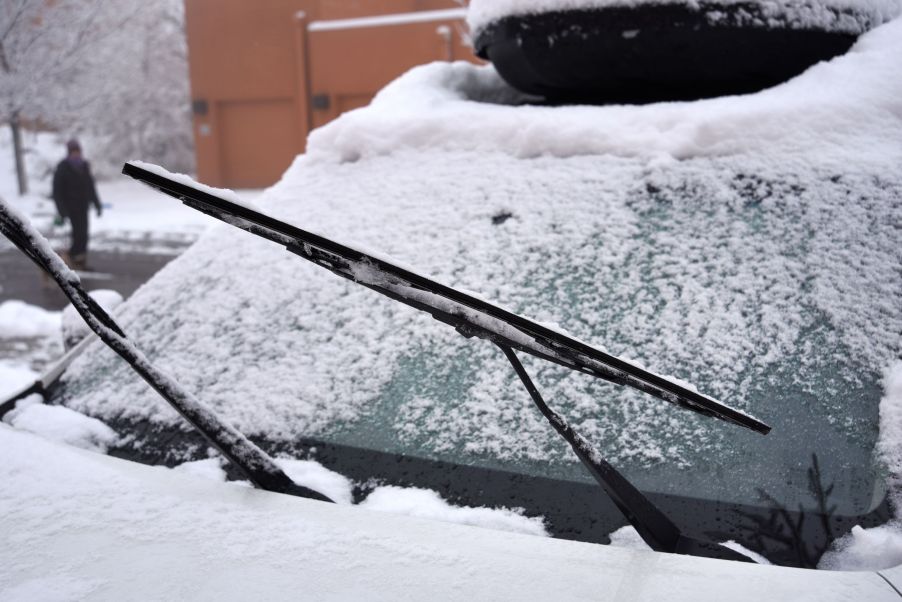
It Might Be Time to Change Your Windshield Wiper Blades
A key part of getting your car ready for winter is making sure all the necessary maintenance is complete. But we’re not talking just about involved tasks like oil changes and timing belt replacement. There are a number of small and seemingly minor maintenance tasks that, if not completed, can cause anything from bouts of annoyance to potential accidents. And one of those is making your windshield wiper blades are in good condition.
Windshield wiper blades aren’t just strips of rubber

As with your car’s tires, its windshield wipers and blades have evolved over the years. True, the ‘traditional’ or ‘conventional’ rubber blade attached to a metal frame, is still around, Roadshow and Autoweek report. But that’s not the only kind of windshield wiper blade available nowadays.
Firstly, some brands, like RainX, incorporate rain-repellant chemicals into their blades. And secondly, the traditional blade is now joined by ‘flat/beam’ and ‘hybrid’ blades, The Drive reports. According to Consumer Reports, they all function in the same way. Namely, a motor moves an arm that presses the rubber blade into the windshield to remove obstructions, debris, liquid, etc. However, they differ in how the wiper blades stay in contact with the windshield.
Beam blades lack a frame. Instead, steel springs or a single solid shape are built into the rubber itself. This makes them adhere better to the windshield, which has both aerodynamic and cleaning benefits. However, they’re more expensive, and their one-piece designs clog more easily with sand and dirt.
Hybrid wiper blades combine the traditional blade’s metal frame with a beam blade’s one-piece design. They’re not quite as light or as quiet at high speeds as beam blades, The Drive reports. However, they perform better than traditional ones and don’t clog as easily as beam ones.
Winter blades can fit into any one of the previously-mentioned categories, The Drive reports. But, like winter tires, they’re designed with winter’s harsh conditions in mind. They have thicker blades made of specially-condition rubber compounds to remain flexible even in the cold. Some have Teflon-coated edges to improve ice and snow clearing. Their frames and hinges are also sturdier to better-resist ice and snow buildup.
When should you change them?
Even if you don’t drive where snow and ice come into play, windshield wiper blades do require periodic replacement. Typically, the recommended schedule is 6-12 months, Autoblog reports. However, depending on how often and where you use your wipers, that may be too long of a period.
There are several signs that your windshield wiper blades are on their way out, AutoZone reports. Worn blades squeak as they move across the glass, as well as vibrate excessively. They also leave streaks behind or don’t wipe fluid away at all.
However, the blade itself isn’t the only part of the windshield wiper. The entire arm is attached to a multi-part mechanism, Road & Track explains. There’s the electric motor, the linkage, and gears connecting it to the arm, and wires and electrical components controlling the motor, The Drive reports. And just like the wiper blade, these parts can also wear down over time.
Should you change the blade or the whole wiper?
Typically, the windshield wiper blades are the only regularly-replaced part of the whole assembly. And they don’t always need to be swapped out, but cleaned and adjusted to maintain a good glass connection. But if you’re noticing issues even after they’ve been swapped out, the rest of the wiper may need to be inspected.
Two common issues are a bent wiper frame and loose wiper-transmission nut, The Drive reports. The former often causes chattering, rather than squeaking. As for the latter, a dead giveaway is a lack of wiper movement. Luckily, the solution is just to tighten the nut holding the arm to the transmission.
If the wipers don’t respond to the in-cabin controls, that points to either an electrical fault or a motor failure. The fault could be as simple as a blown fuse, or complex enough to require new wiring. A simple test is to check other systems wired together with the wipers, such as the turn signals or headlights, The Drive reports. That can help you or your mechanic pinpoint where the fault is.
Follow more updates from MotorBiscuit on our Facebook page.


